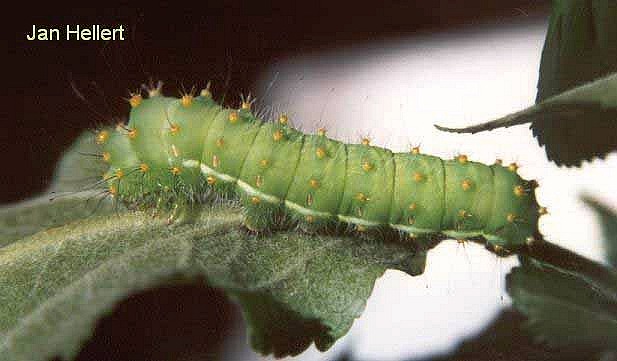UK: Atlas Peacock Moth, F: Paon de nuit de Lucas, FIN: Atlasvuortenriikinkukkokehrääjä.
Saturnia atlantica Lucas, 1848 Explor. Sci. Algérie 3: 379.Type locality: Lake Tonga, Algeria.

Holarctic; western Palaearctic region. Pleistocene refuge: Monocentric -- Atlantomediterranean and Mauritanian subsections of the Mediterranean refuge. Part of the present-day relict Mauritanian faunal element centred on northwest Africa (see de Lattin, 1967).

Wingspan 92--120mm. Very similar to Saturnia pyri but differs in having narrower forewings which are distinctly more concave along the outer margin. The wing uppersides are also more grey than in Saturnia pyri, with a pair of thin, very undulating postmedial lines on both sets of wings.

A nocturnal species of deciduous woodland, parkland and orchards. In behaviour, very similar to that of Saturnia pyri.
Late February to May, depending on altitude. Most are on the wing in March and April.
OVUM: Oblong, 2.4 x 1.7mm, greyish-white with brown gum.
LARVA: Full-fed 90--100mm. Monomorphic.

First instar larvae are reddish-brown with a black head and tubercles, and grey edging to the prolegs; each tubercle bears long, golden setae. In the second instar the head becomes yellow with black cheeks. The body is grey ventrally, with a yellow sub-spiracular band on the abdominal segments. The tubercles are grey and black, and reduced, except on the thoracic segments. These now bear short grey setae. In the next instar (third), almost all the grey and black pigmentation disappears. The body is pale yellow, the head medium yellow, and the tubercles pale blue on yellow bases. Those on the thoracic segments each bear a long black hair. The spiracles are dark brown. This colour scheme continues through the fourth instar, with the yellow becoming deeper, some pale green appearing between the segments, and the tubercles changing to orange. In the final instar the body is generally apple green with a yellow sub-spiracular line. Similar to the larva of Saturnia pyri, but with the true legs mainly green (brown in Saturnia pyri) and the body tubercles pale orange (blue in Saturnia pyri).
Hostplants. Various species of ash (Fraxinus (Fraxinus berliandieriana)), olive (Olea europea), alders (Alnus), buckthorns (Rhamnus) and Prunus (apricot, plum and cherry). Also lilacs (Syringa).
PUPA: 30mm. Cylindrical, but tapering towards both ends. Blackish-brown with sienna highlights. Formed in a coarse, pear-shaped, double, unsealed Vandyke-brown cocoon, which is fixed lengthways on a branch or the tree-trunk. Smaller and thinner than that of Saturnia pyri.
Unknown.
Confined to the north-facing lower and middle heights of the Atlas Mountains of northwest Africa, from Morocco through Algeria (Whittie, iNaturalist 2007) to Tunisia (Khalil Ezzine, iNaturalist 2019).
Extra-limital range. None.

None.
 Return to species list
Return to species list